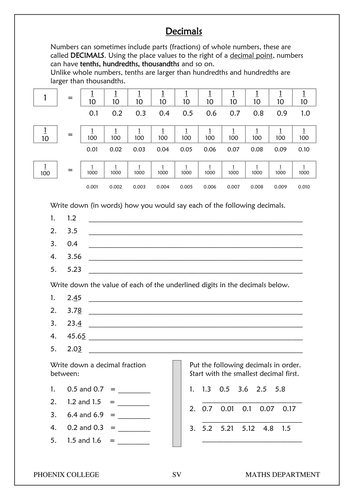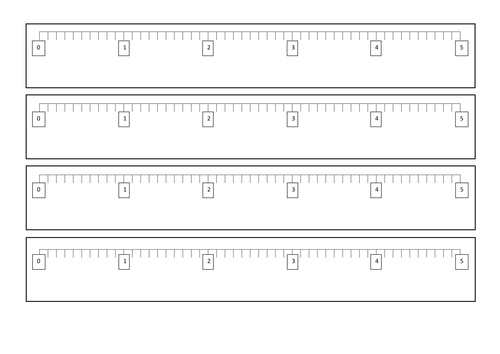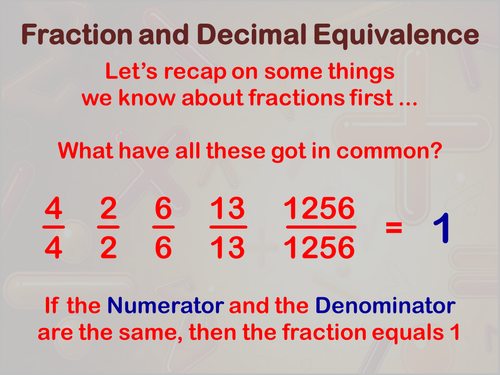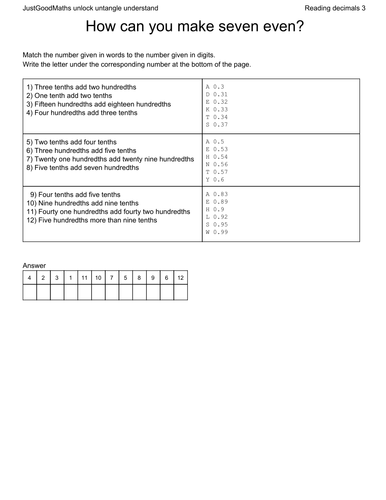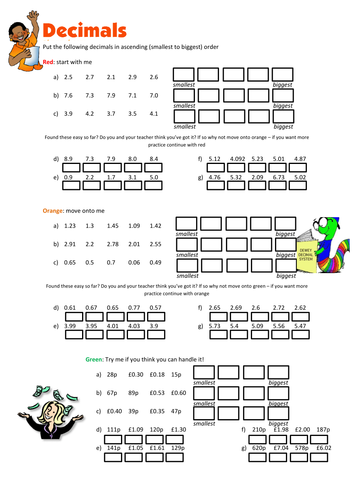Number: Decimals
Throughout these chapters, pupils extend their understanding of the number system to include tenths, hundredths and thousandths.
Previously, pupils worked with numbers and parts of numbers smaller than one when learning about fractions. In this topic, pupils will learn that tenths, hundredths and thousandths can also be represented using decimal notation. They will realise that a given number or proportion may be represented using either decimal or fraction notation, and make connections between the two.
Money and other measures such as length, weight and volume offer useful contexts through which pupils can solve problems using decimals. However, pupils should also work with decimals in more abstract contexts, including those in which they are not able to think of the digits after the decimal point as representing centimetres, millilitres or pence, but instead as tenths, hundredths and thousandths of the whole.


